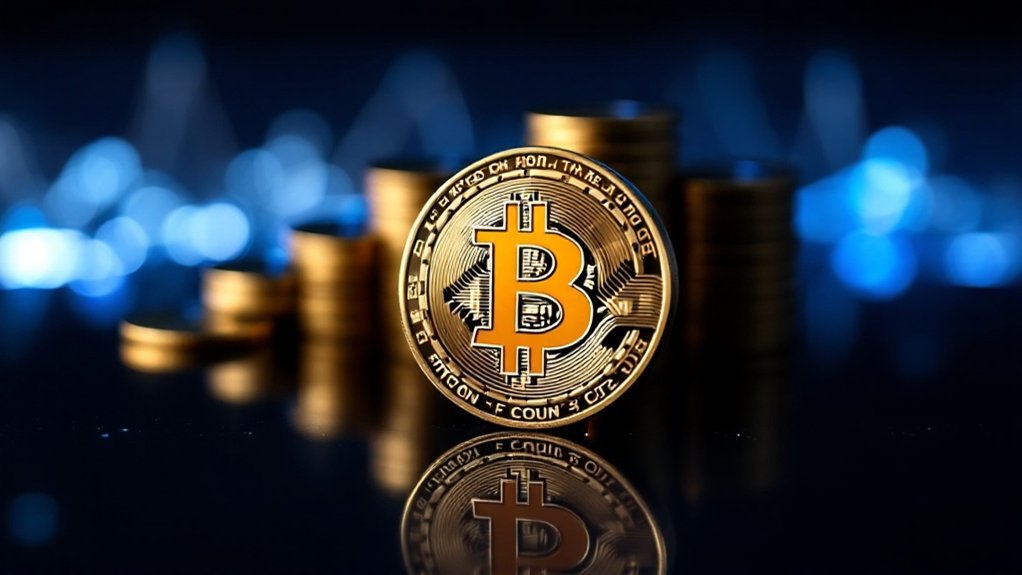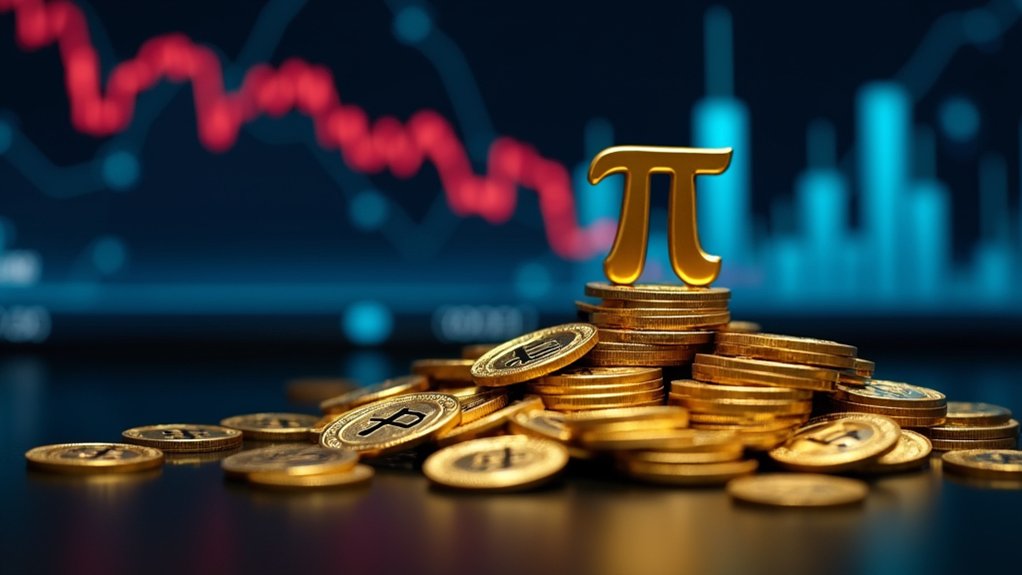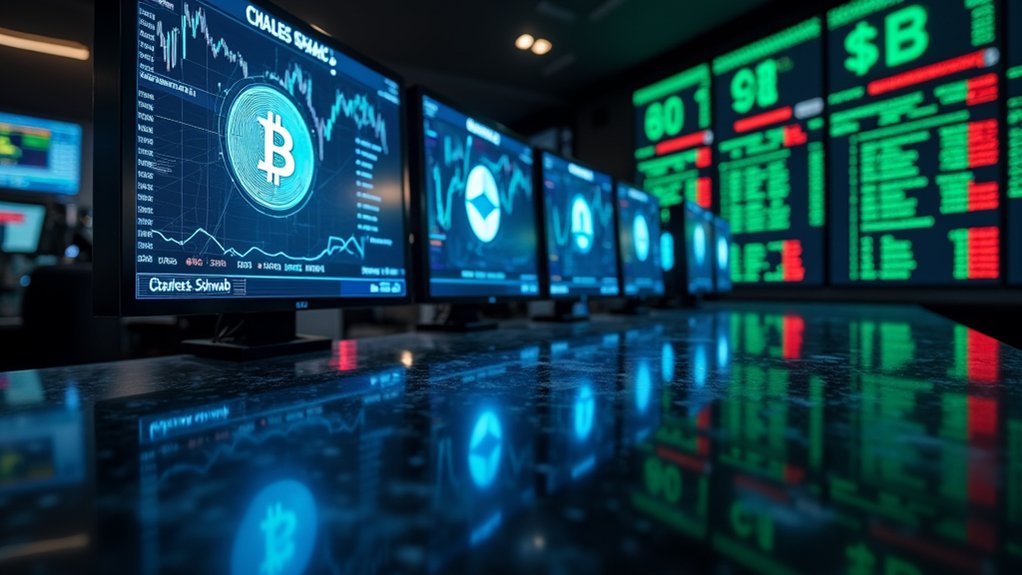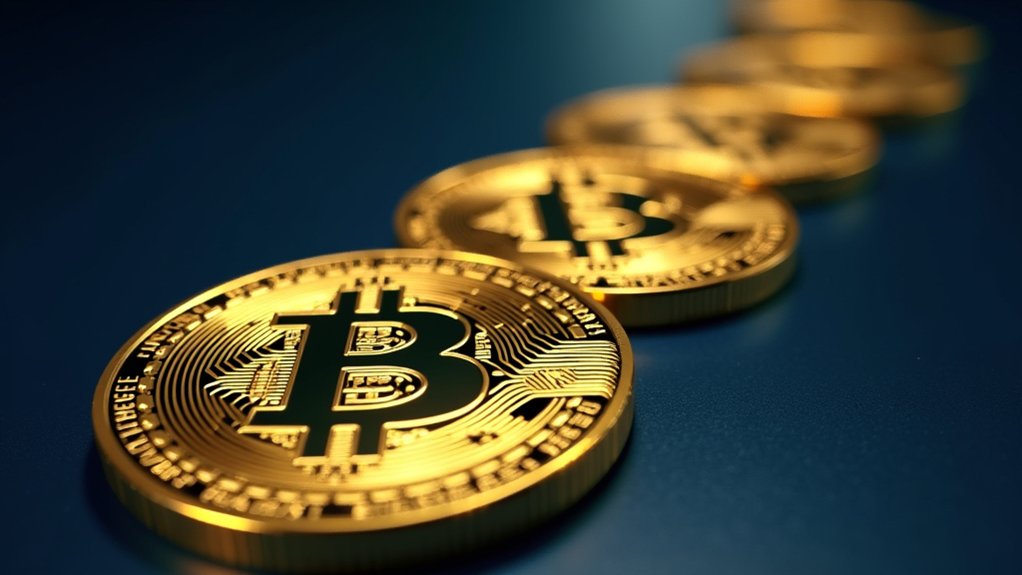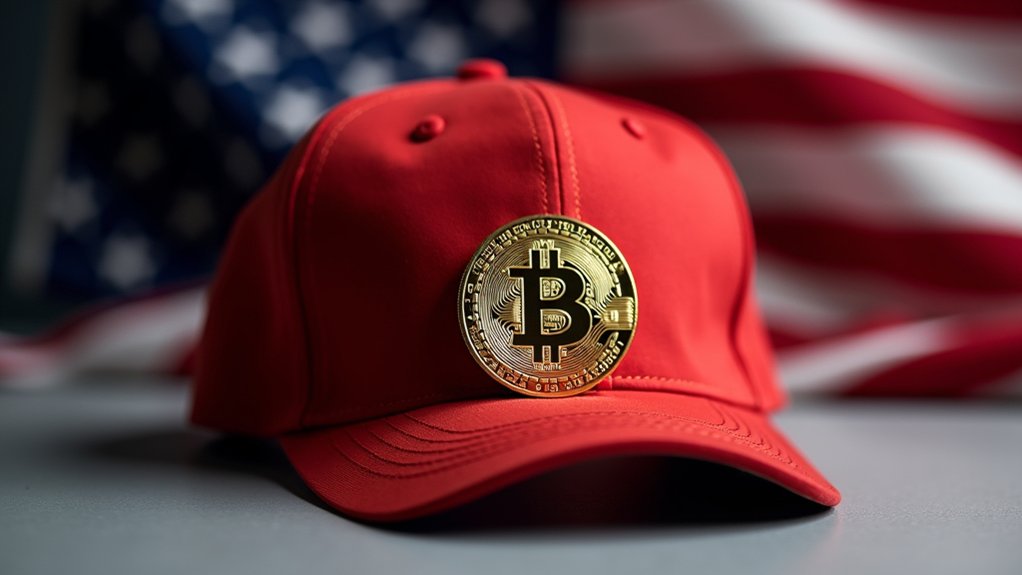ADA is Cardano's native cryptocurrency, launched in 2017 by Charles Hoskinson after he left Ethereum. Named after math whiz Ada Lovelace, it runs on a proof-of-stake system that's way more energy-efficient than Bitcoin's power-hungry mining. Holders can stake tokens for rewards and vote on network changes. With a max supply of 45 billion coins and top-10 market status, ADA isn't just another crypto bandwagon – it's backed by peer-reviewed research and real-world utility. There's more to this story than meets the blockchain.

While many cryptocurrencies promise to revolutionize finance, ADA stands out as the native token of Cardano, a blockchain platform that actually delivers substance over hype. Created by Ethereum co-founder Charles Hoskinson in 2017, ADA wasn't just another crypto cash grab – it was named after Ada Lovelace, a brilliant 19th-century mathematician who'd probably be mining crypto if she were alive today.
What makes ADA different? For starters, it runs on a proof-of-stake system called Ouroboros. No energy-hungry mining rigs here. Just clean, efficient transaction processing that could theoretically handle up to a million transactions per second. Like all blockchain networks, Cardano ensures that its records remain immutable once transactions are validated. Validators are chosen through a random selection process based on the amount of ADA they've staked in the network.
The platform's layered architecture separates basic transactions from smart contracts – kind of like keeping your socks and underwear in different drawers. It just makes sense. The platform's development is supported by three key organizations – IOHK, Cardano Foundation, and Emurgo.
ADA holders can do more than just transfer value. They can stake their tokens for rewards, vote on governance decisions, and create native tokens without dealing with smart contracts. It's like a Swiss Army knife of crypto functionality, minus the tiny scissors that never work anyway.
The tokenomics are straightforward: 45 billion ADA maximum supply, with about 35 billion already in circulation. No printing money indefinitely here. The platform follows a carefully planned roadmap through five eras – Byron, Shelley, Goguen, Basho, and Voltaire. Currently in the Basho era, Cardano is focusing on scalability improvements.
Storage options include the hefty Daedalus wallet for desktop users and the lighter Yoroi wallet for those who prefer mobile. Transactions typically complete in about 20 seconds, with fees that won't make you cry – unlike some other blockchain networks we could mention.
ADA has seen its share of market drama, hitting an all-time high of $3.10 in September 2021. While price volatility is as common in crypto as bad takes on Twitter, ADA consistently ranks among the top 10 cryptocurrencies by market cap.
Major exchanges list it, and institutional interest continues to grow, suggesting this mathematician-inspired crypto might just have the right formula for success.
Frequently Asked Questions
How Does ADA Staking Affect Network Security and Decentralization?
ADA staking strengthens network security by making attacks economically painful – validators risk losing their staked funds for bad behavior.
Pretty effective deterrent. The system promotes decentralization by letting anyone with 5+ ADA participate in validation through delegation.
More validators means less concentrated power. Plus, stakers earn 2-5% annual rewards for helping secure the network.
It's a win-win setup that aligns everyone's interests with keeping things running smoothly.
What Role Does Game Theory Play in Cardano's Consensus Mechanism?
Game theory is the backbone of Cardano's consensus. The system uses mathematical modeling to predict and influence how participants will behave.
Stakes, rewards, and penalties create a delicate balance – pushing everyone toward ideal strategies. Through clever incentives and a dash of randomness, the protocol fundamentally forces people to play nice.
It's like an invisible hand guiding stakeholders toward decisions that benefit both themselves and the network.
Can ADA Tokens Be Used for Governance Decisions Within Cardano?
Yes, ADA tokens are central to Cardano's governance system.
Holders get voting rights proportional to their stake – more ADA means more voting power. Simple math.
Through on-chain voting, ADA holders weigh in on network decisions, treasury withdrawals, and protocol changes.
It's part of Cardano's shift to full decentralization after the Plomin hard fork.
Want a say in Cardano's future? Better stack some ADA and start voting.
Stakes are high, literally.
How Does Ada's Inflation Rate Compare to Other Major Cryptocurrencies?
ADA's 2.5% inflation rate stands out as remarkably low in the crypto landscape.
It's less than half of Ethereum's 5% rate and considerably below other major players like Avalanche's 15% and Solana's 14%.
Only Bitcoin, with its 1.8% rate (dropping to 0.86% after the 2024 halving), beats ADA in the scarcity game.
This controlled inflation puts Cardano in a sweet spot – not too inflationary, not too deflationary.
Pretty clever positioning, actually.
What Determines the Transaction Fees When Sending ADA Between Wallets?
Transaction fees on Cardano follow a straightforward formula: a fixed cost (0.155381 ADA) plus a per-byte charge (0.000043946 ADA/byte) multiplied by transaction size.
Simple math, really. A typical 200-byte transfer runs about 0.164 ADA.
But hey, fees aren't set in stone – network congestion, transaction complexity, and metadata all play their part.
And yes, those governance votes can shake things up by tweaking the parameters.
Nothing's ever simple in crypto.

